This orange miso vinaigrette is bright and acidic, yet also savory and rich. White miso paste helps to create a salad dressing that has complexity and depth. This is a perfect vinaigrette for greens, grains, and roasted vegetables.
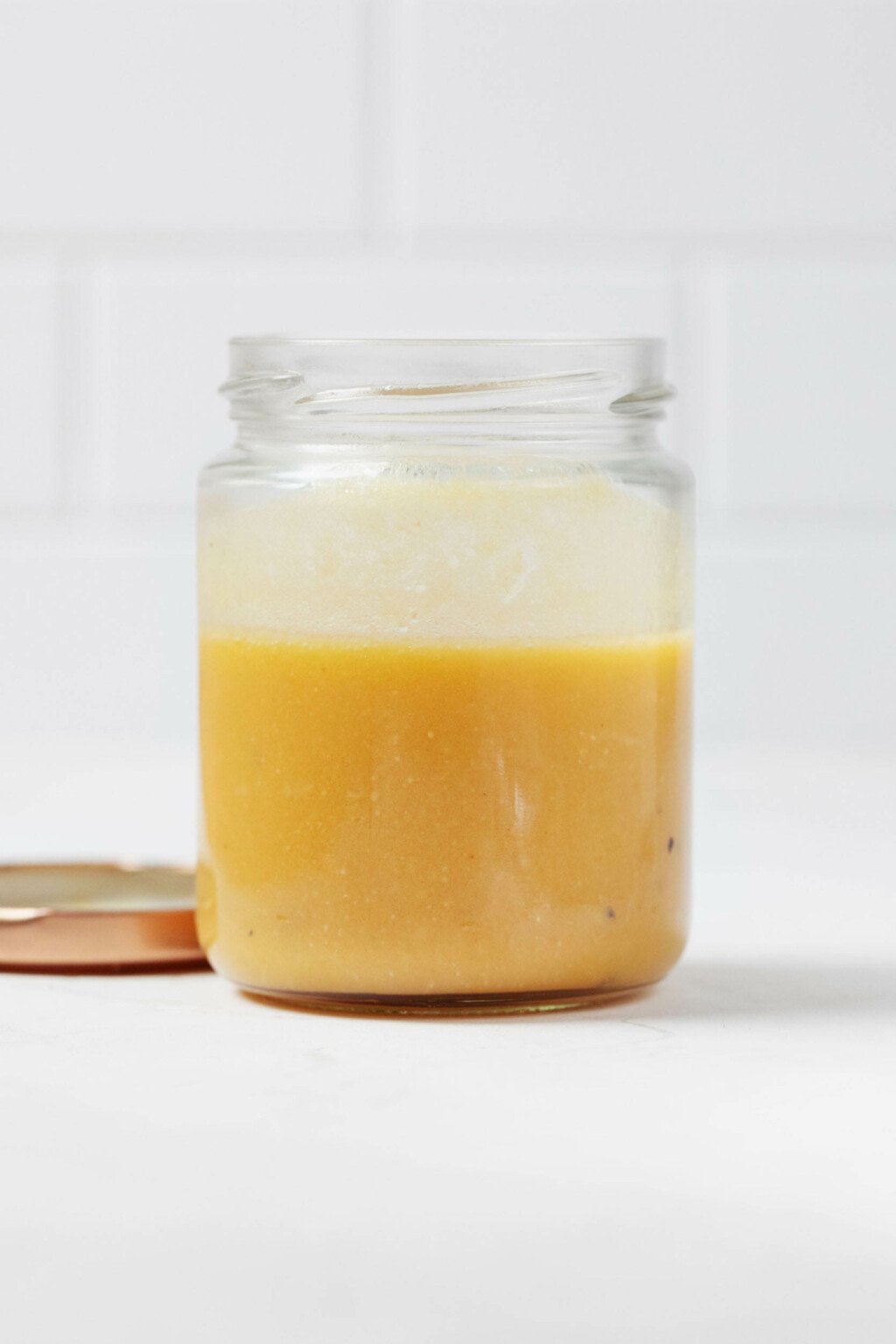
About a year ago, I got a great radicchio salad at a restaurant. It featured a miso salad dressing—specifically, a miso vinaigrette.
Had the vinaigrette not been labeled as “miso dressing” on the menu, I might not have immediately guessed that the miso was there.
When I tasted the salad, though, it made sense. The vinaigrette had a savoriness and richness that was unusual and memorable.
As is usually the case when I taste something that inspires me in a restaurant, I immediately got to thinking about how I might recreate the vinaigrette at home.
Then I remembered that I had actually experimented with a miso vinaigrette years ago. My homemade version had included some freshly squeezed orange juice, so there was brightness to balance the salty and savory qualities of the miso.
This past effort gave me a mental roadmap to build on.
Now, I’ve experimented with a few more batches of orange miso vinaigrette, and I’m so happy with what I’ve landed on.
What is miso?
Miso is fermented soybean paste. Typically, it’s made with soybeans, water, salt, and koji.
Koji, which is essentially the base culture used in miso (and sake) preparation, can be made from fermented rice, barley, or soybeans.
There are many types of miso. The two varieties of miso paste that are sold commonly in US grocery stores are red miso and white, or shiro, miso.
Red miso contains a higher proportion of soybean, rather than rice, koji. It has a deep, reddish brown color and an intensely salty and savory flavor.
White miso, or shiro miso, is also salty, but it has faintly sweet undertones as well. White miso has a higher proportion of rice koji, rather than soybean koji, and its color can range from beige to pale yellow.
I tend to use white miso more often than red in my recipes. I like its versatility; white miso is assertive enough to season soups and roasted vegetables. Yet it’s also mellow enough to work in dips, spreads, or dressings.
This orange miso vinaigrette is a good example.
Is miso gluten free?
It depends. Some types of miso are made exclusively with soybeans, chickpeas, or other legumes. These varieties can be truly gluten-free.
Many varieties of miso use koji that contains barley or rice that has cross-contamination. In these cases, the miso isn’t gluten free. People with celiac disease should be especially careful about checking labels when they select a brand of miso to work with.
The Miso Master brand of white miso, which is what I use at home, is apparently NSF gluten-free certified.
Working with miso paste
Miso paste isn’t a difficult ingredient to work with, but it is a little delicate.
If you boil miso aggressively in a soup, for example, the heat may affect the miso’s flavor or aromas. It’s best to simmer soups with miso gently.
Miso is a thick paste, so it’s also helpful to turn it into a slurry or whisk it gradually when adding it to liquids.
When I add miso to soup, I always create a slurry with about a half cup of hot broth or water (or another cooking liquid) before transferring it into my pot.
When I’m whisking miso into a sauce, as I do to make his miso vinaigrette, I usually whisk the miso with a small amount of liquid—about a quarter cup—first.
Once that mixture is smooth, I gradually whisk in more liquid until I’ve created the smooth dressing or sauce that I want.
The magic of miso in dressing (or sauce)
Miso’s primary flavor qualities are saltiness and savoriness. White miso is also a little sweet, while red miso can be a little funky.
Most vinaigrette recipes call for a good amount of salt. This is necessary to season salad and balance the acid and fat in a dressing.
Miso vinaigrette doesn’t only rely on salt for salinity. The miso contributes saltiness of its own, yes, but the it’s not a flat, straightforward salty quality. Instead, it feels rich and dimensional.
How to make orange miso vinaigrette
Many of my favorite vinaigrette recipes, including my simple Champagne vinaigrette, Italian dressing, and Greek vinaigrette, can be made simply by putting ingredients into a mason jar and shaking vigorously.
The citrus miso vinaigrette is a little more involved in that there should be some stepwise whisking. Yet it’s still quite easy to prepare.
Here are the steps.
Step 1: Whisk together the miso and orange juice
First, you’ll whisk together two tablespoons of white miso and a quarter cup of orange juice.
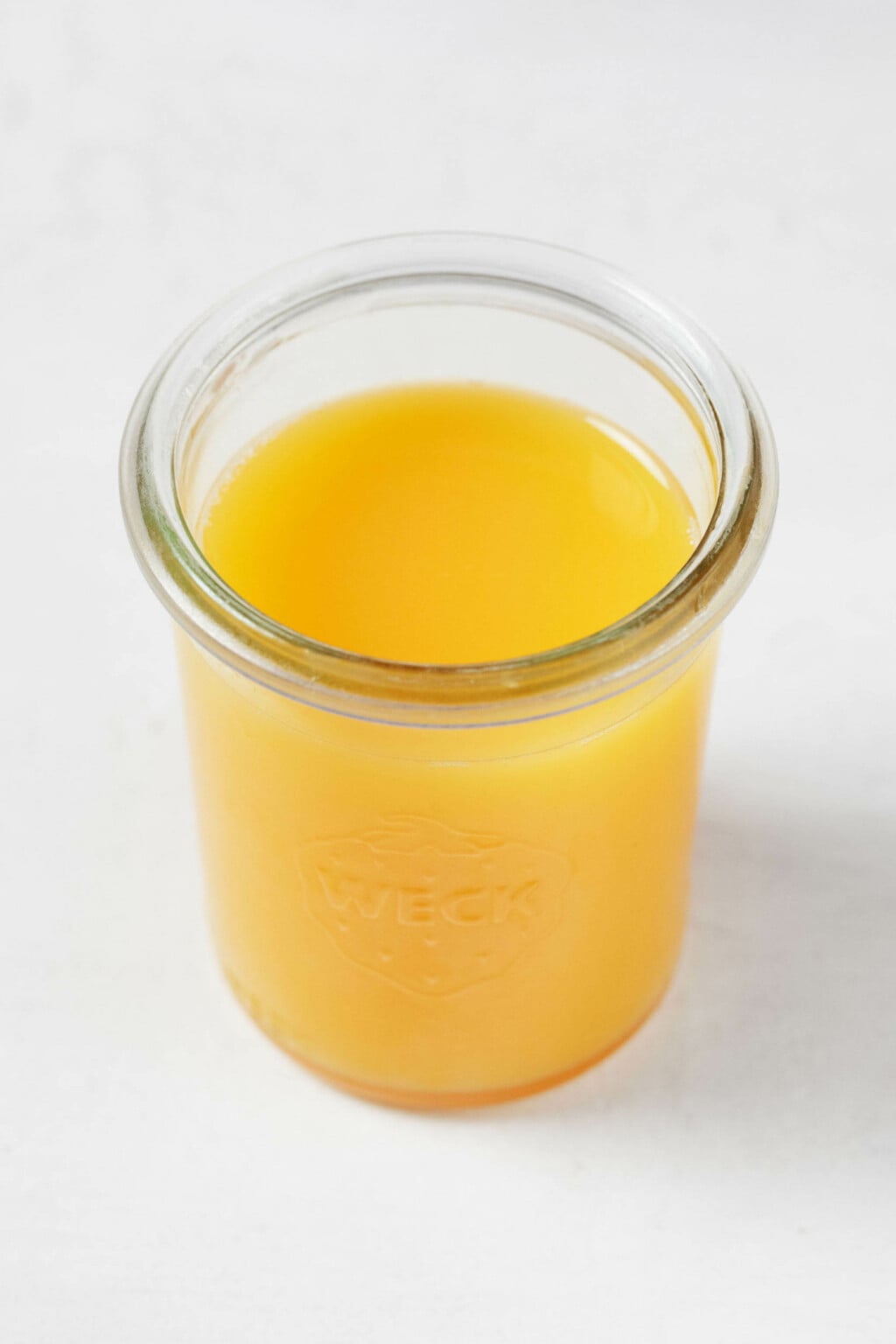
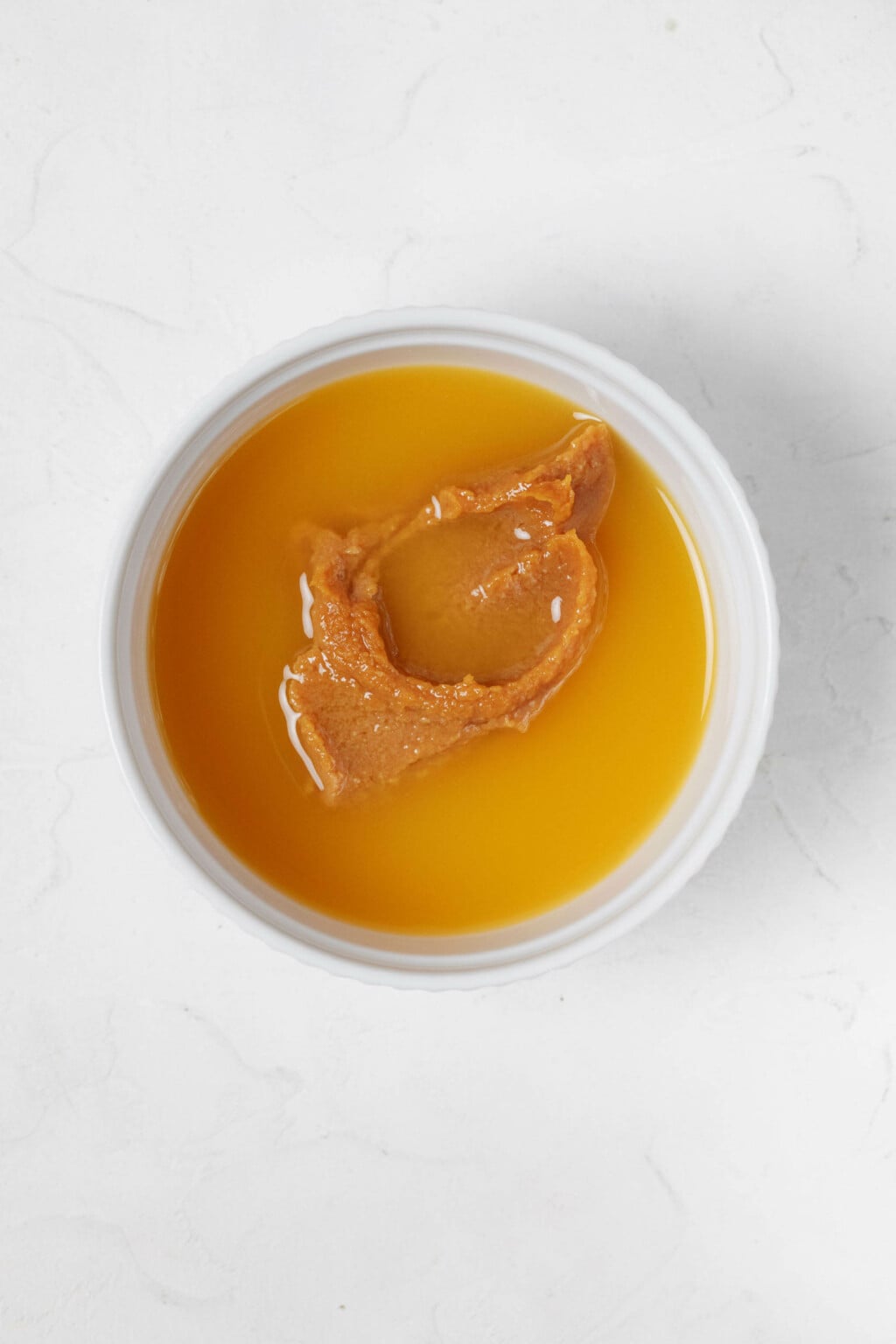
The miso won’t dissolve in the OJ right away. Rather, it will take two or three minutes for a smooth liquid to form. Simply be patient and keep whisking!
As far as orange juice goes, you can use freshly squeezed or pasteurized. I like the flavor of freshly squeezed better, but both options are fine.
Step 2: Whisk in the remaining ingredients.
Once you have a smooth liquid base for the vinaigrette, you can whisk in the remaining ingrdients.
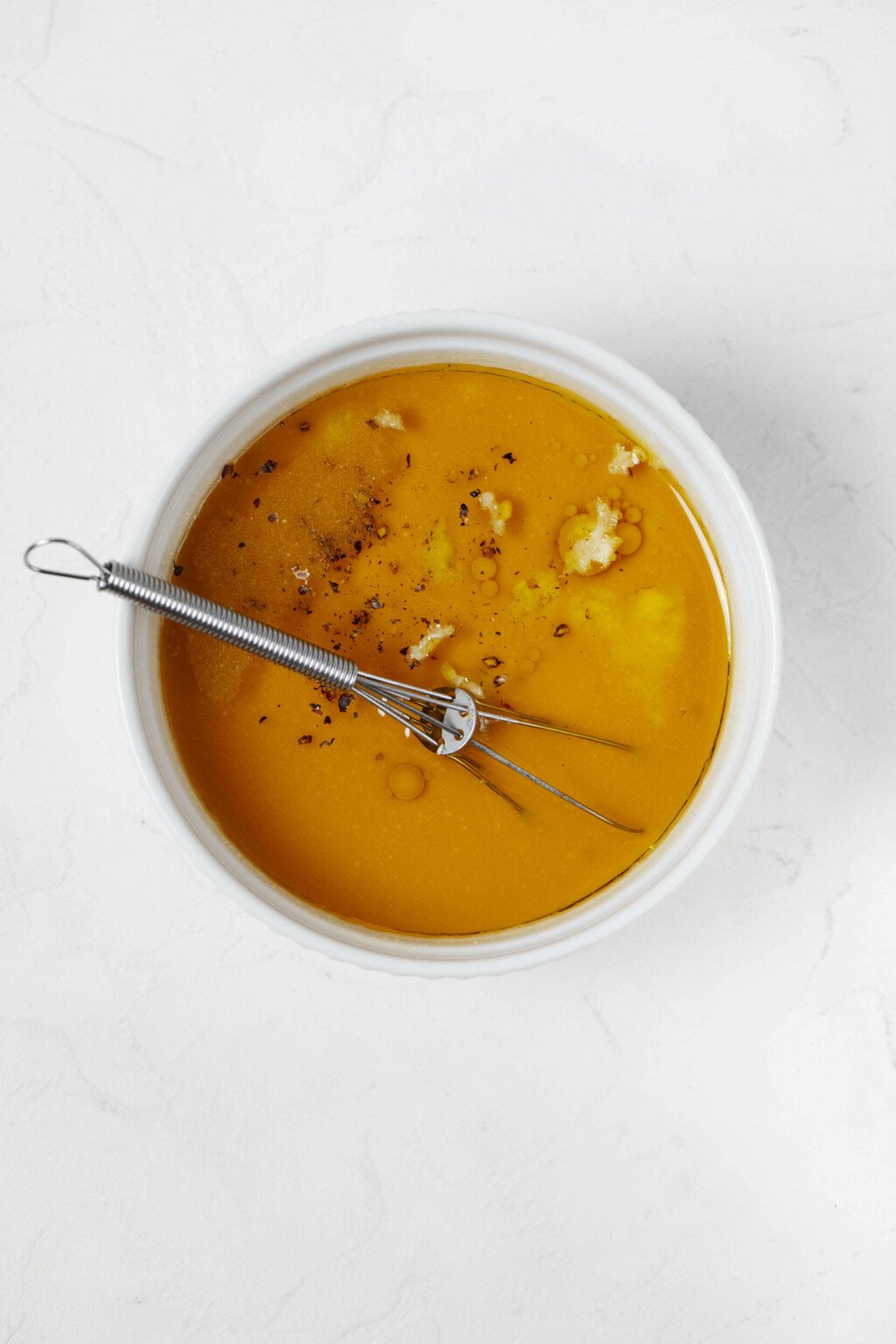
These are freshly squeezed lemon juice, olive oil, minced garlic, salt, and pepper. Whisk vigorously, so that the orange and miso mixture turns into a nice emulsion with the oil.
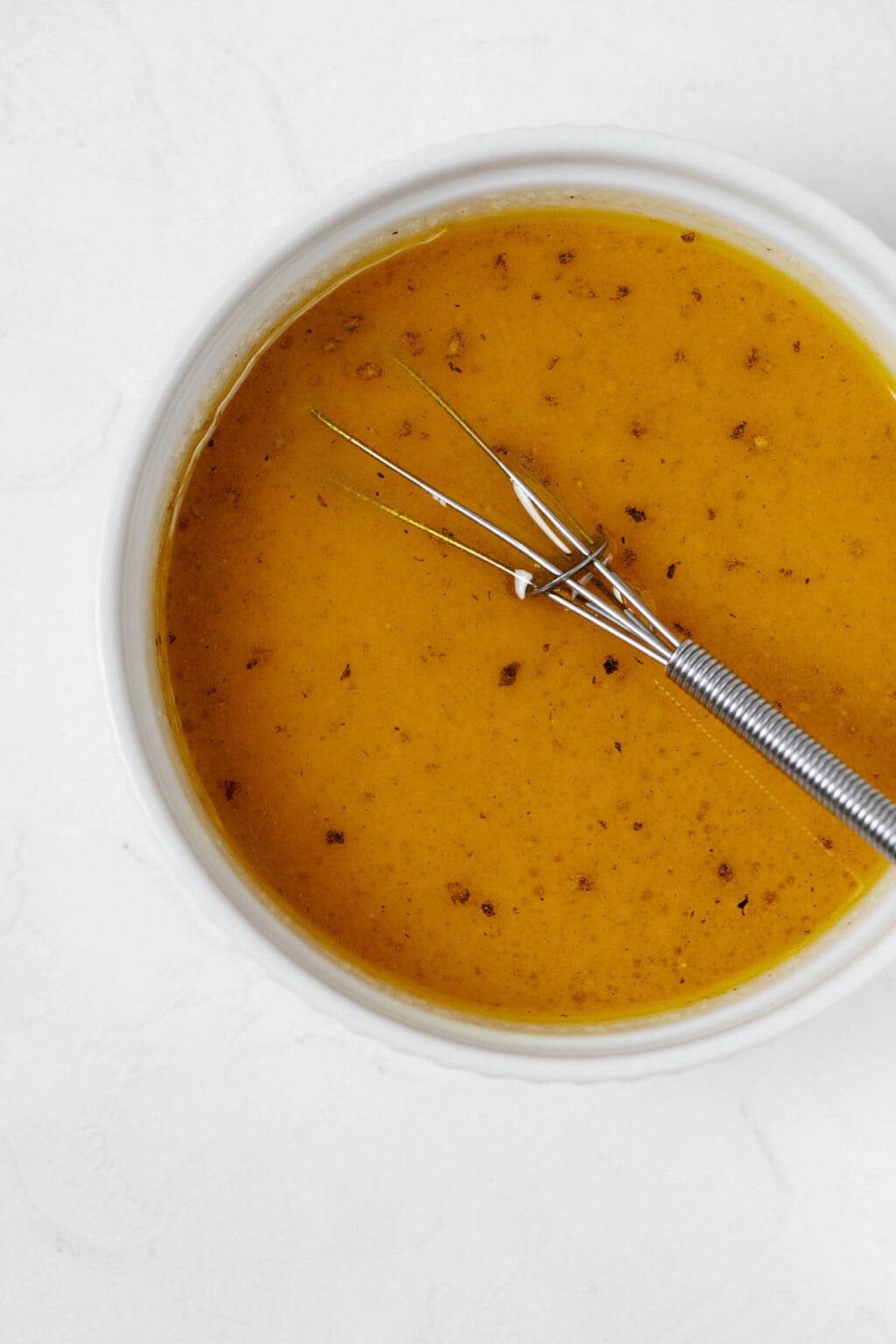
For this vinaigrette and other homemade salad dressings, I like to use a mini whisk. It’s inexpensive and so useful.
However, any small-ish whisk is fine for this job. A long fork will work well, too.
Step 3: Store or use
Once you’ve whisked the orange miso vinaigrette together, you can store it or use it right away.
The dressing can be stored in an airtight container in the fridge for up to one week.
Uses for orange miso vinaigrette
I really can’t think of many salads that wouldn’t be great with this dressing. You could use it to dress my simple butter lettuce side salad, in place of the champagne vinaigrette that’s called for.
The dressing would also be great on a raw, kale salad, thinly sliced cucumbers, or shaved carrots.
I can imagine that the miso vinaigrette would be a good dressing for a cold, soba or Udon noodle salad in the summer months.
Speaking of noodles, I use this dressing in my kelp noodle salad with seared tempeh.
It’s also the perfect choice for my brown rice broccoli salad with edamame—a meal that’s half grain bowl, half salad, and so nourishing.
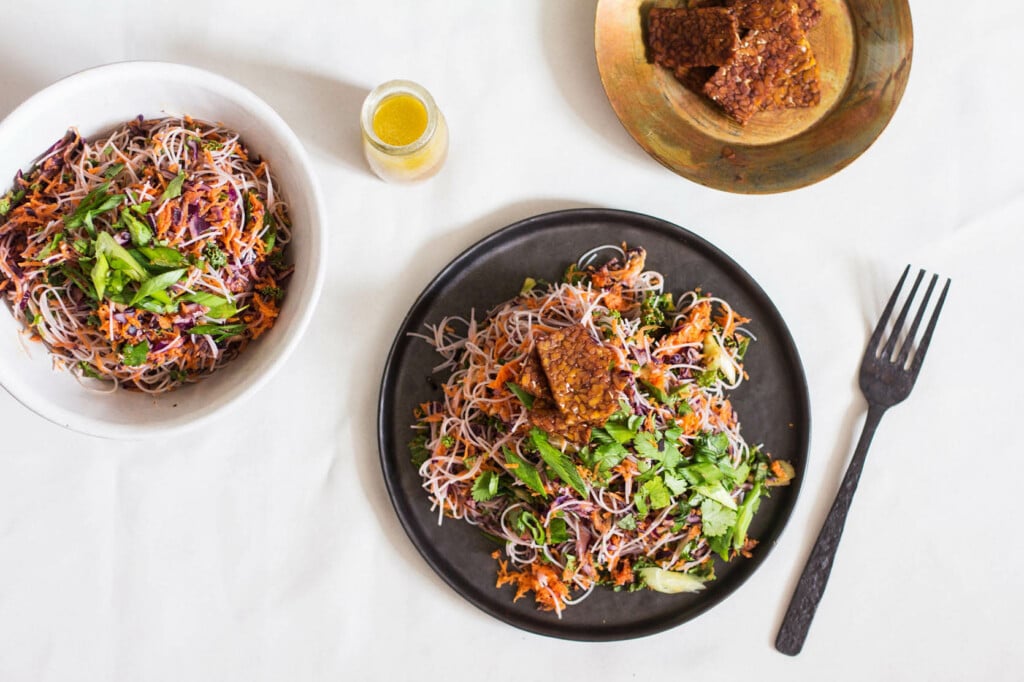

Finally, the miso vinaigrette is my go-to for a vibrant and colorful mixture of kale, radicchio, fennel, and orange.
This is one of my favorite side salads for winter, and I ate it a lot this year.
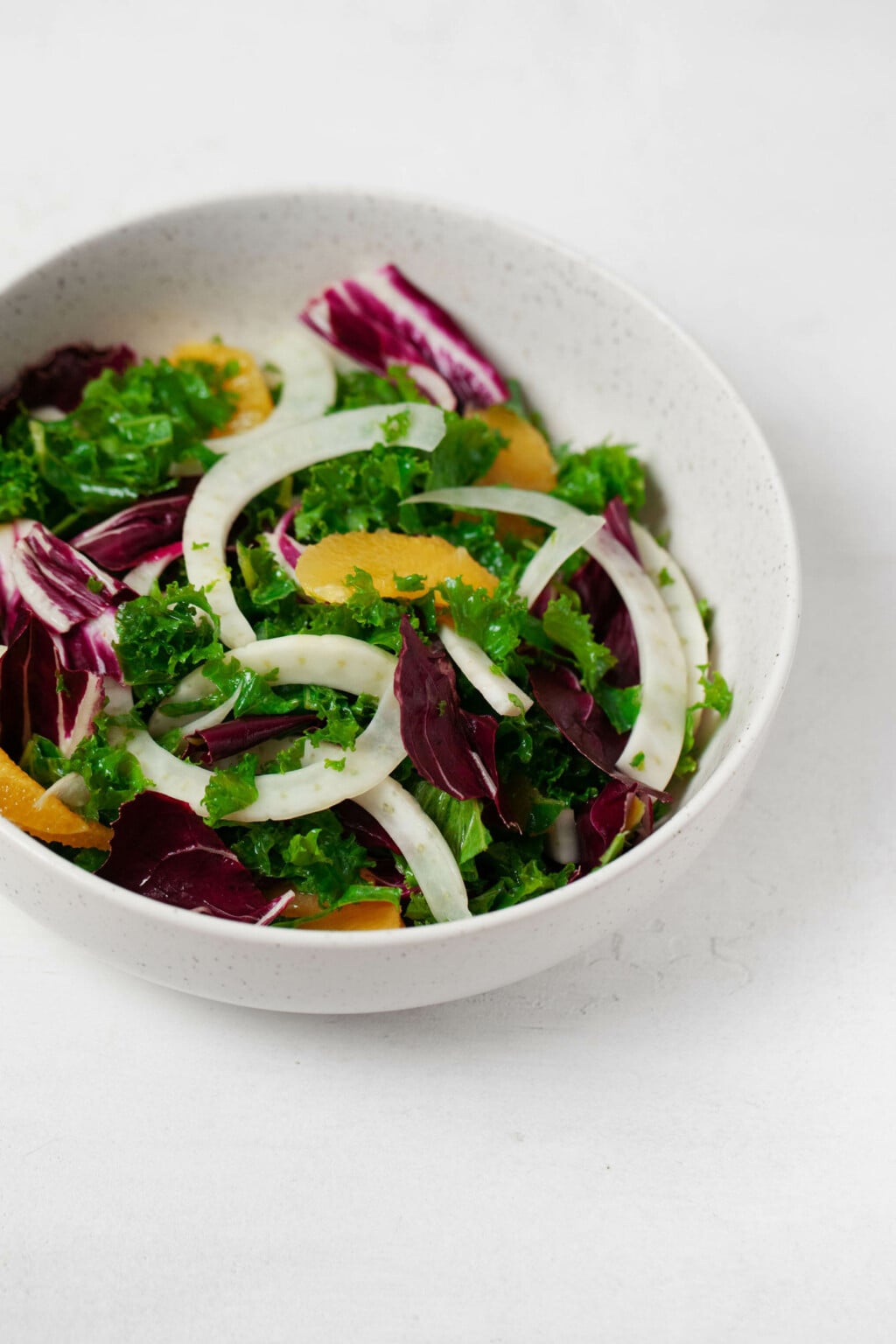
If none of these uses are calling to you, then try drizzling the orange miso vinaigrette over your next batch of roasted root vegetables.
I can promise that its balance of tart, sweet, and savory notes is a perfect compliment to oven-roasted carrots, parsnips, or turnips.
It would also be a brilliant dressing for your next batch of oven-roasted beets!
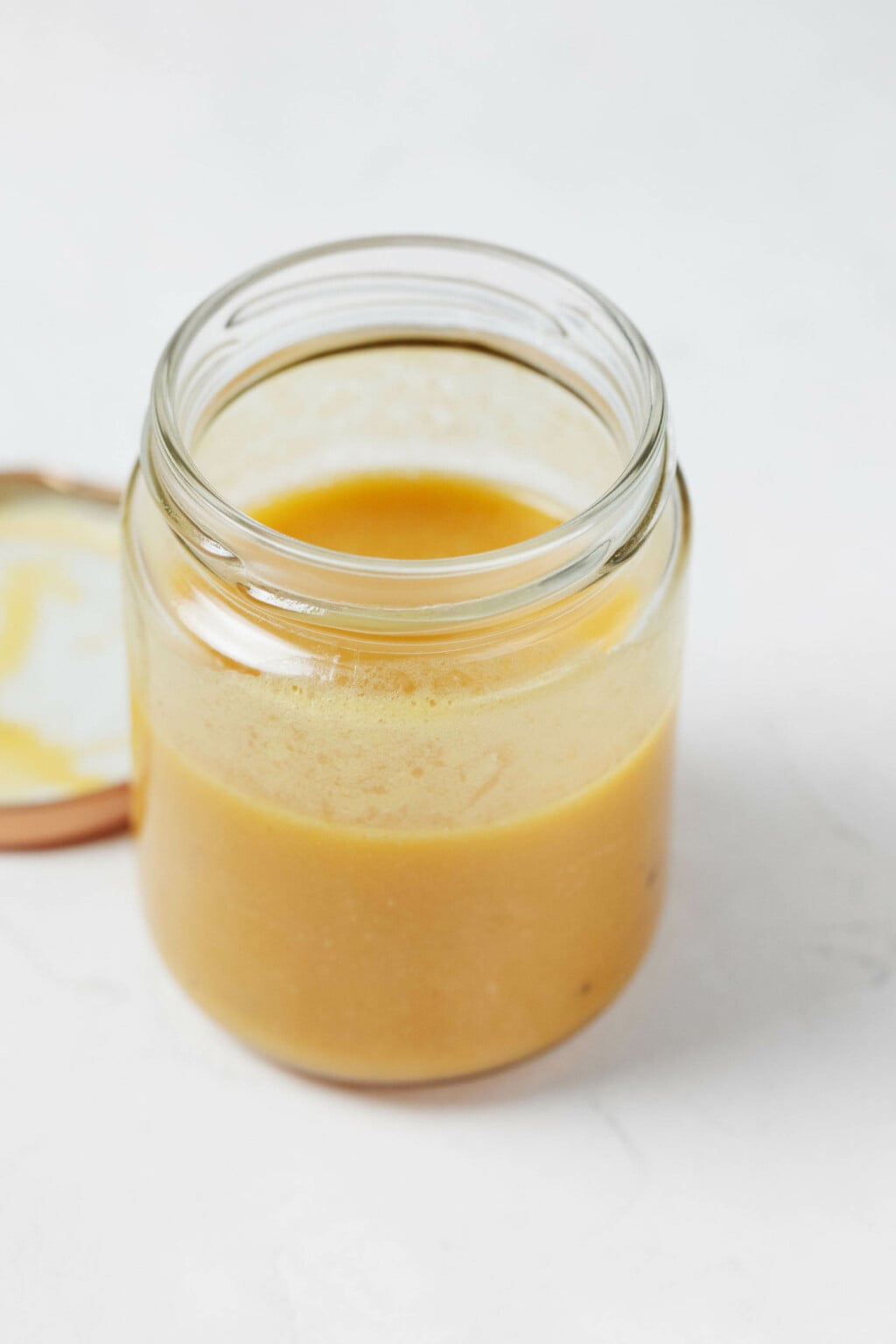
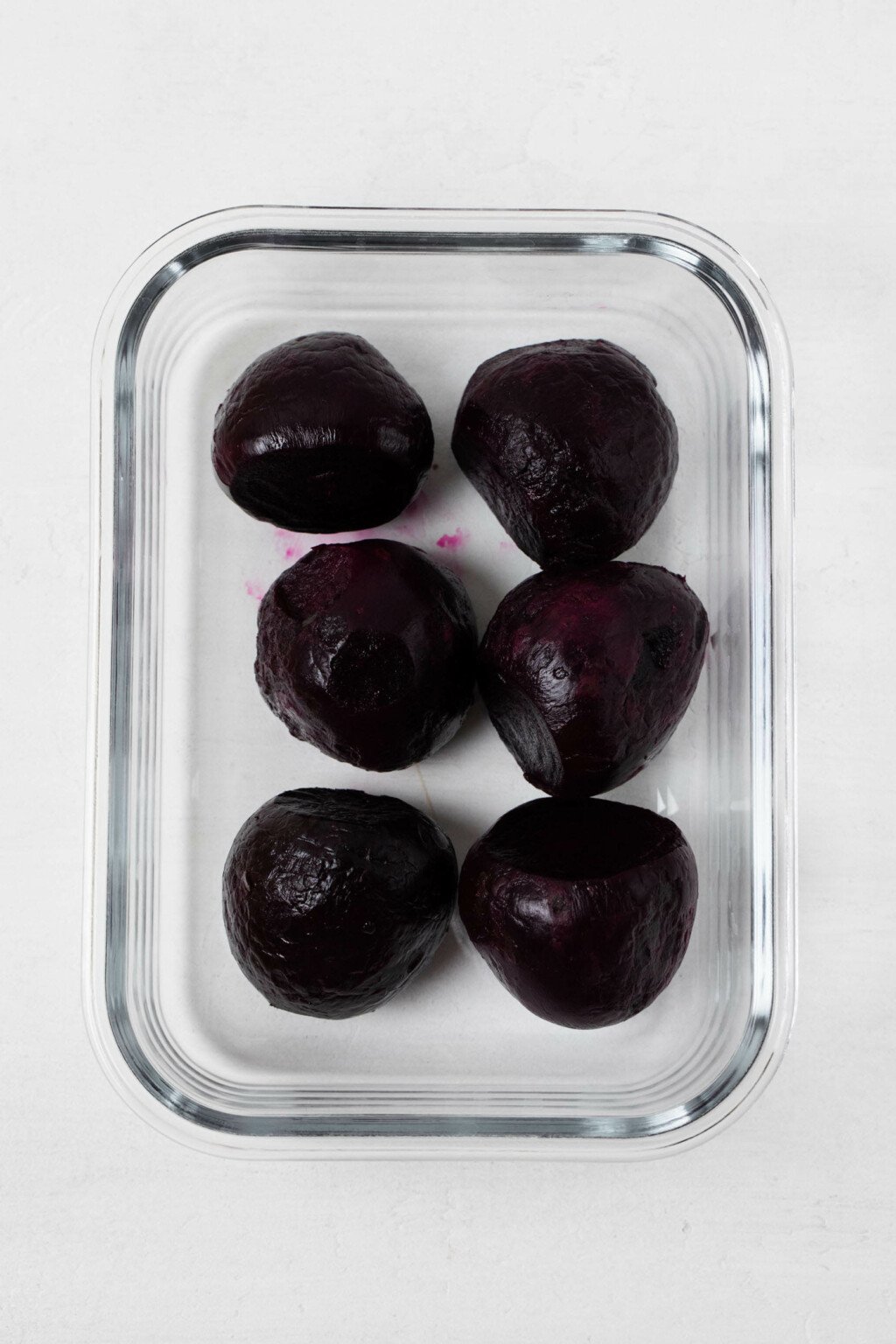

Orange Miso Vinaigrette
Author –Ingredients
- 2 tablespoons white miso (30g)
- 1/4 cup orange juice (freshly squeezed or pasteurized) (60ml)
- 2 tablespoons freshly squeezed lemon juice
- 1/2 cup olive oil (120ml)
- 2 cloves garlic, minced or grated on a microplane zester
- 1/4 teaspoon fine salt
- 1/8 teaspoon freshly ground black pepper
Instructions
- In a medium small mixing bowl, Pyrex liquid measuring cup, or a mason jar that can hold at least a cup of liquid, whisk together the miso and orange juice till smooth. This may take a couple minutes; just be patient and keep whisking until the miso has broken down and you have a creamy, thick liquid. There may still be a few tiny clumps of miso visible, which is OK, but the aim is for the liquid to be as smooth as possible.
- Add the lemon juice, olive oil, garlic, salt, and pepper to the miso and orange mixture. Whisk again until smooth and emulsified. Serve or store the vinaigrette in an airtight container in the fridge for up to 1 week.
This is my second weekend in a row of getting back into the habit of impactful vegan meal prep.
I always make something on Saturday or Sunday, but work projects and social disruptions have kept me from prepping a substantive amount of food.
A batch of this miso vinaigrette is one of the first things that I plan to make, and I know that I won’t be sorry. I can see it giving life to lots of cooked grains and salads and bowls this week.
I hope that you’ll find it useful, too!
xo
This post may contain affiliate links. If you use these links to buy something I may earn a commission. Visit my privacy policy to learn more.
Dietary Preferences: Gluten Free, Tree Nut Free, Vegan
Recipe Features: 30 Minute or Less, Meal Prep

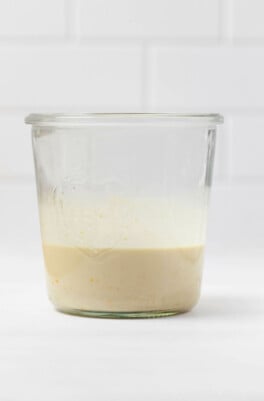
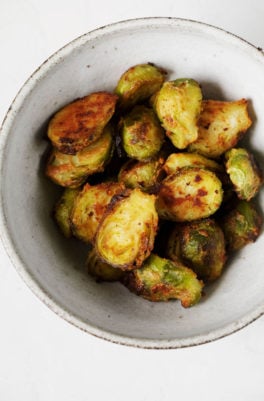
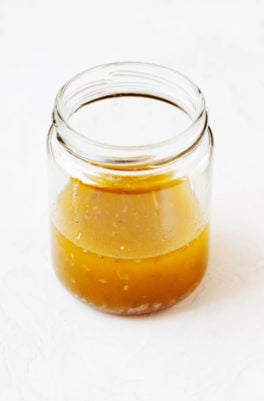
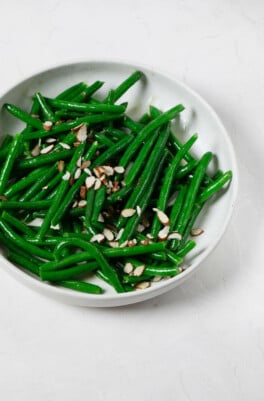
Leave a Comment